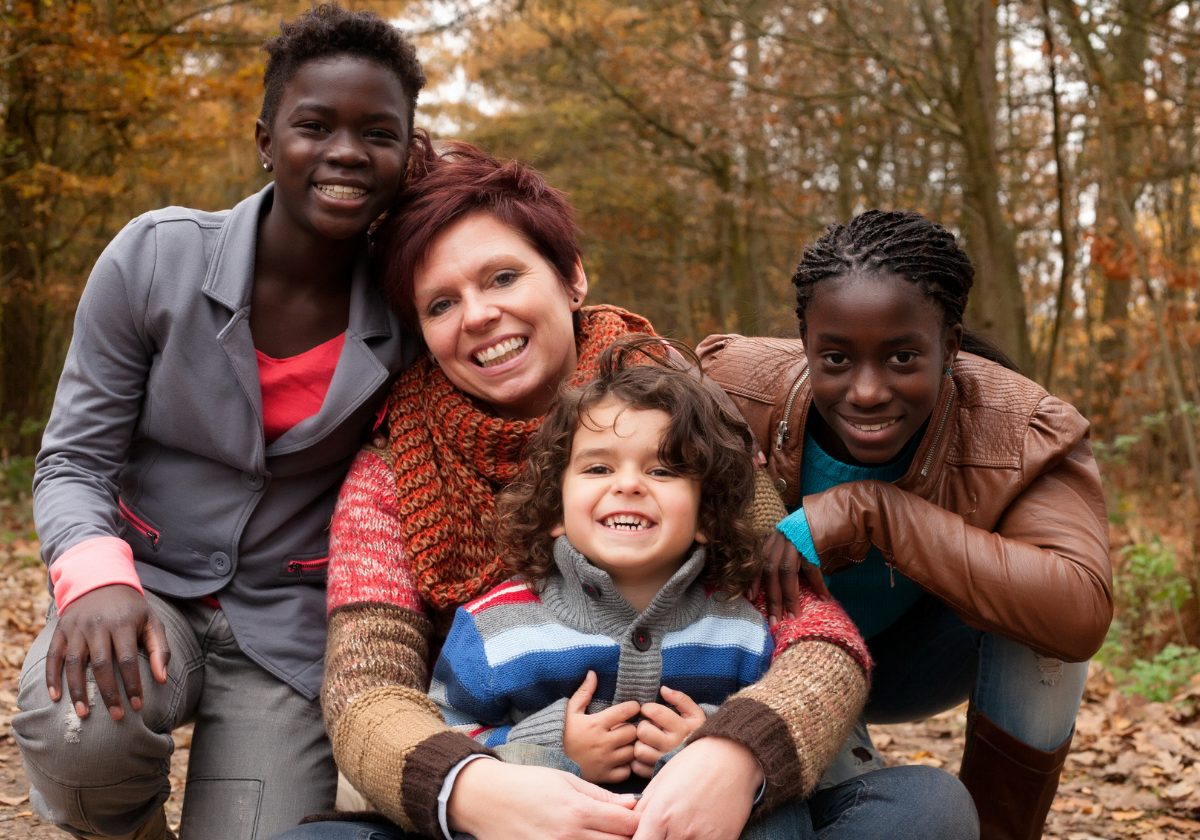Tackling the big, messy, hard, beautiful world of adoption is no easy task. There are thousands of perspectives to be shared, topics to be broached, and stereotypes to be broken.

At Dwell, we take on those hard things head on, and we have a pretty constant stream of requests that sound something like, “where do I even start?”
We work directly with families to educate them - not directly on “how to adopt” but on the heavy considerations to be placed on the avenue they choose to pursue and aftercare required for the children they bring home.
We wrap around foster and adoptive families with support so that they have the capacity to love their children well.
If you’ve ever considered adoption but aren’t quite sure where to start, we’re happy to share the first stepping stones. Children can come into your home through a myriad of ways, but the process can be filtered into three basic avenues.

- Inter-Country Adoption
Pursuing inter-country adoption involves making connections with orphan care organizations in countries outside of the United States (or your home country) in order to bring home a child currently living in a group home or orphanage. This is also sometimes referred to as international adoption.
The process can vary greatly, depending on the country that families choose to pursue as well as the age, gender, and special needs families are open to. Some countries have long timelines and may require adopting families to reside there for a period of time. Other countries, such as Ukraine, require multiple trips before families can bring their child home, while countries like China only require one trip. In Columbia, waiting children tend to be older with fewer special needs, while countries like Bulgaria often have young children with moderate special needs waiting to be adopted. The choice of which country you pursue truly depends on what best suits your family.
Children placed for international adoption are typically either abandoned or surrendered at birth. While their processes vary by country, many countries attempt to place children for domestic adoption first. Once a child is eligible for international adoption and a file is completed, those children are either matched with waiting families or listed as waiting children on advocacy sites.
Perhaps most importantly, it is encouraged to choose a country that is part of The Hague Convention in order to ensure that the adoption is ethical.
- Private Domestic Adoption
Domestic adoption is the process of adopting a child within your home country from a private agency and with the facilitation of the legal system. These children’s parents have elected and consented to the adoption, and often choose the family with whom their child is placed.
Most families who hope to adopt a newborn will do so through private domestic adoption.
As expectant families evaluate their situation and capacity, they may choose prior to birth or at birth to make a plan for their child. In rare cases, and dependent upon their life circumstances, they may also choose to place their older children as well.
In recent years, the ethics surrounding private domestic adoption have come into question. The coercion of the process - specifically when it comes to preying on vulnerable expectant women - has been brought to light by a huge network of advocates seeking change. Unbiased counsel, support after placement, and evaluation of services provided to expectant women are being evaluated in an effort to create a more child-focused system.
After careful evaluation of ethics, many families wishing to pursue domestic infant adoption select an agency or consulting group to assist them through the home study, matching, relationship building, and post-placement process.
- Adoption Through Foster Care
First and foremost, it is crucial for families to understand that the goal of the foster care system is always reunification. When children are removed from their biological parents’ care, plans are set in place to restructure the family’s capacity, setting them up with action steps intended to lead them to gaining back custody of their children.
When those action plans are unsuccessful - when parents prove beyond reasonable doubt that they are not capable of providing care for their children - alternative permanency plans are established. At this point, foster families are given the opportunity to provide that permanency (and they often do!).
With that in mind, there are more than 3,000 children in Pennsylvania currently waiting for permanency with a forever family. The Pennsylvania Statewide Adoption & Permanency Network provides resources and information on how to pursue the adoption of waiting children in PA.

The need is great - and not just for children to be brought into loving, secure homes.
An equally critical need is support for families who say yes to foster care and adoption, taking on the responsibility and weight of caring for children from hard places.
Dwell provides trauma-informed care training, support groups, and post-placement care packages specifically intended to build connection and enhance attachment in newly-made families. You can learn all about what we do on our website at www.dwellorphancare.org.
You can make a difference in your local community right now by partnering with Dwell!
- Collect new items to help stock the Hope Chest foster closet
- Engage your church. Dwell can help you establish a Family Advocacy Ministry to wrap around vulnerable children and the families that love them.
- Become a monthly sustainer for Dwell’s work, providing financial support for adoption grants, foster family care packages, trauma-informed training, and direct family care.
- Pray for families considering adoption and foster care, as well as children from hard places.
If you are interested in learning more about adoption, foster care, or opportunities to support foster families in your community, contact Dwell at info@dwellorphancare.org or scan this QR code:




